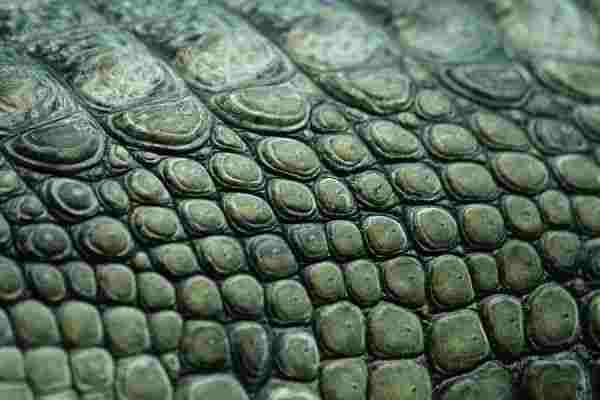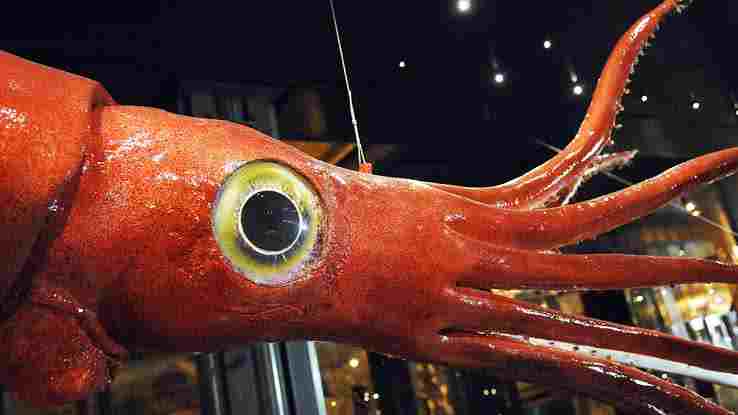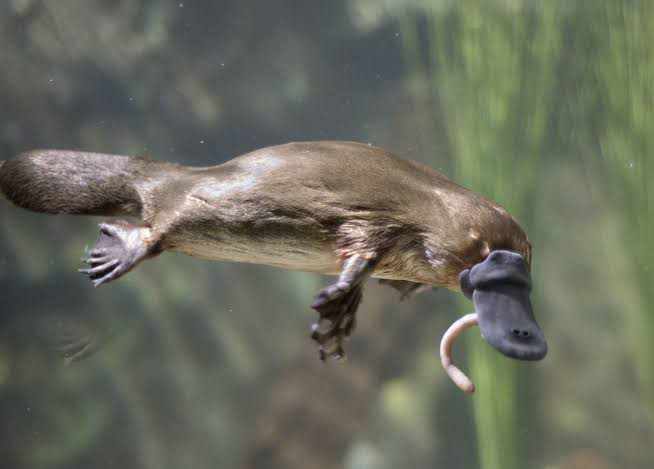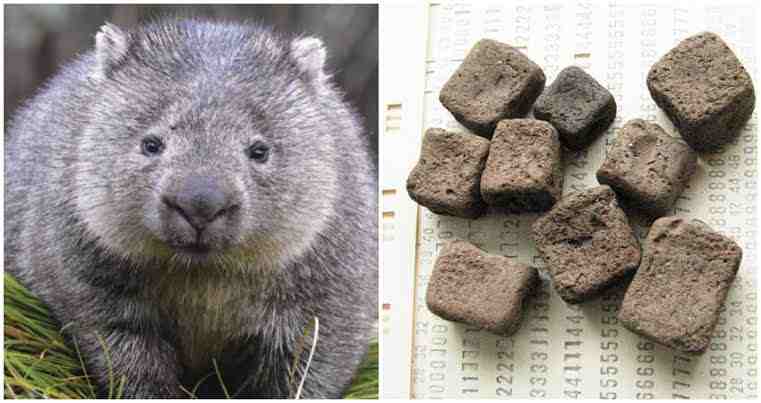 Alfred Ajibola
- Tue, 16th April, 2019 @ 8:32 PM
Alfred Ajibola
- Tue, 16th April, 2019 @ 8:32 PM
Topics in Biology
Cellular respiration in biology Len Academy biology mock questions for waec Len Academy biology midterm questions for SS1, 2nd Term Characteristics of saltwater habitat Aquatic habitat explained with its types Types of habitat: Terrestrial habitat explained with examples What is habitat? Difference between plant cell and animal cell Nucleus explained with its structures Nucleus explained with its types and functions Organelles of the cell explained with their characteristics Eukaryotic cell explained with its characteristics Prokaryotic cell explained with its structure Characteristics of prokaryotic cell Concept of cell Cell theory in biology Importance and limitations of ecological pyramid Protists explained with their characteristics Contents of the scrotum: Epididymis, vas deferens, spermatic cord and cremaster muscle Tropical savanna explained with its characteristicsAcademic Questions in Biology

From the above diagram, which of the organ below isn't a requirement for the male reproductive system?
A. Bladder
B. Ureter
C. Glans Penis
D. Testis
E. Bulbourethral Gland
F. Epididymis
A walnut shaped male accessory sex organ located between the bladder and penis is the _____.
A. Ductus Ejaculatorii
B. Bulbourethral Gland
C. Prostate Gland
D. Ductus Deferens
E. Seminal Vesicles
F. Epididymis
In a food chain, the primary consumers are classified under trophic level _____.
A. Zero
B. One
C. Two
D. Three
E. Four
F. Five
Cold blooded animals are referred to as _____.
A. Homeotherms
B. Endotherms
C. Poilokitherms
D. Ectotherms
E. Thermotherms
F. None of the above
All reptiles are vertebrates.
A. True
B. False
_____ cells are responsible for the formation of osteoblasts.
_____ is a bone that constitute the axial skeleton.
Which of the following is false concerning cartilages and bones?
Reptiles are vertebrates (animals with backbone) belonging to the class reptilia. In Latin, the word 'reptile' means creeping animals.
Reptiles are believed to have evolved from another set of vertebrates called reptiliomorph, more than 300 million years ago. These were initially aquatic animals (lived in water) which became adapted to land.
Please read on the basic characteristics of life here.
It is noteworthy to state that reptiles are not amphibians, although they are generally believed to have evolved from amphibians. Meanwhile, some reptiles hibernate while others brumate.
During hibernation, an organism stays in a sleep-like state without food for a long period of time. During this period, the hibernating organism survives from the fat reserve under its skin.
Brumation on the other hand is quite similar to hibernation except that the animals are neither asleep nor live off their fat reserve. Instead, the organism's metabolic processes become very reduced thus resulting into the sluggishness (and reduced physical activities) of the brumating animal.
Please read on the characteristics of protists here.
Below are some of the characteristics or features of reptiles.
An animal is considered to be a vertebrate if it has a backbone or vertebral column. Reptiles, pisces (fishes), amphibians (toads and frogs), aves (birds) and mammals are all vertebrates.

Frilled lizard's skeleton
The backbone of reptiles commences from the lower end of their skull and runs throughout their body length. Present inside the backbone is the spinal cord which constitutes a part of the central nervous system.
Please read on skeleton and skeletal materials here.
You can read on the bones of the human body here.
Reptiles cannot physiologically regulate their body temperature. To explain this, let's briefly consider humans who have got a defined body temperature of 36.5oC.
This stability in human temperature is made possible via a process termed homeostasis, regardless the weather condition they may find themselves (whether in cold or warm conditions).
In the case of reptiles, the weather condition determines their body temperature. When it’s warm, their temperature increases and when cold, it decreases.
When the weather becomes too hot, they tend to move into places with shades of trees (or even water) in an attempt to lower their body temperature. We can therefore conclude that their body temperature is dependent on their environment.
Cold blooded animals are also referred to as poikilotherms or poikilothermic animals or ectotherms or ectothermic animals. This is so because their external environment aids in regulating their temperature.
Note: Humans are homeothermic animals (homeotherms or endotherms) since their temperature is regulated internally via various homeostatic organs.
Please read more on homeostasis here.
Although enzymes in humans work best at a specific temperature (36.5o), that isn’t the case in reptiles. Because they (reptiles) are ectotherms, their metabolic enzymes work efficiently over a wide range of temperatures.
Unlike mammals whose bodies are covered in hair/fur or birds whose bodies are covered in feathers (and their legs scale), all reptiles have their bodies covered in scales or scutes. The scales and scutes protect them from environmental dangers.
The chelonians (turtles and tortoises) in addition to having scales and scutes also possesses a hard protective shell called carapases. This gives them an extra protection to their upper bodies.

Snake's scale
Scales are generally composed of keratin and can either be tubular or ossified in appearance. In addition to providing protection and movement, they also prevent loss of water from the animal's body to their external environment; and this is one reason why some reptiles are capable of surviving in deserts.

Crocodile's scute
The scutes are different from scales because they give more protection; and appear more like a dermal armor. They are found in tortoises, turtles and crocodiles.
Please read on amazing facts in biology here.
Most reptiles are oviparous animals. This implies that they lay eggs which are covered in shells. However, a few are ovoviviparous (that is, the eggs remain in the mother’s womb until they are ready to hatch) while others are viviparous, meaning that the young ones are born alive.
Some reptiles will incubate their eggs either by lying on them or by burying them below the earth until they hatch.
Finally, few reptiles will look after their young ones but only for a short period of time.
Moulting, also called ecdysis is a process whereby animals shed their skin. This moulting process is apparent in insects and reptiles. They remove the uppermost layer of their skin each time it gets worn out.
Parasites on the skins of reptiles are removed through the process of moulting.
Lizard shed their skins in patches while crocodiles shed the individual scales.
Other characteristics of reptiles include:
Kindly share this article via the links below:

Please click here to contact Alfred if you require any of the following services:
If you need a standard website at an affordable price.
Online training on the academic subjects: biology, chemistry and basic science.
If you require an advanced smart school management system (web application) for your school.
Click here to read on Len Academy Smart School Software.
Please click here to follow Len Academy on Google News.
Amazing facts in Biology
Russia is home to the largest area of forest in our world with a land mass of 815 million hectares

Giant squid lives deep in the ocean and they have the largest eyes in the world
The movements of the fingers are controlled by muscles of the palms and forehands

Platypus (sometimes referred to as the duck-billed platypus) is an egg-laying, semiaquatic mammal found in eastern Australia. It has no stomach and as such, its food goes from the mouth through the esophagus and directly to their intestines.

Pufferfish contain a toxin called tetrodotoxin. This makes them foul tasting and poisonous to predators. Tetrodotoxin is about 1,200 times more poisonous than cyanide, and there is enough toxin in one pufferfish to kill 30 adult humans. Unfortunately, there isn't any known antidote to this poison.
Interestingly, a delicacy in Japan (called fugu) is made from pufferfish. This meal is very expensive, and must be prepared by trained and licensed chefs. An improper preparation of fugu may lead to the customer's death. Sadly, such deaths are recorded annually

Wombats are the only animal with a cube-shaped poo. They can stack up these cube-shaped poo, marking their territory with it

Robert Wadlow (1918–1940) remains the tallest man ever recorded in the Guinness World Records. He was an American who stood at 8 feet, 11 inches.
An abnormally enlarged pituitary gland had resulted into Robert Wadlow's giant size.
Cockroach is the fastest land animal on six legs

Like humans, all apes laugh when tickled

An ostrich's eye is bigger than its brain
Notable points in Biology

An artery is composed of three layers:
The outermost layer is termed tunica adventitia (or tunica external). It consist mainly of collagen fibres and connective tissues that anchors the arteries to other nearby tissues.
The middle layer is named tunica media. It is made up of smooth muscles and elastic fibres that supports the artery in conveying blood at high pressures.
The inner layer is called tunica intima (or tunica internal). It is lined by a smooth tissue called endothelium, and is made up of a fine network of connective tissues.
All living organisms possess various features in order to survive in their environment. This is the concept of adaptation. As an instance, a fish is able to live in water because it has gills and fins.
Also, a camel is able to survive in the desert because it has large feet to aid walking on sand without sinking. It also has long eyelashes to help protect it from the blowing sand and wind.
Plants are also able to live in different habitats because they have the required adaptive features towards that habitat. For instance:
Plants that live in/on water are termed hydrophytes.
Plants that live on land with moderate amount of water are termed mesophytes.
Plants that live on deserts or arid lands are termed xerophytes.
The point is:
All organisms have various features on them that enables them adapt in their habitat
For a thing to be considered living, it must possess all the basic characteristics of life. These include:
Movement
Respiration
Nutrition
Irritability or Sensitivity
Growth
Excretion
Reproduction
Death
Adaptation
Competition
Please read the explanations on all the basic characteristics of life here
During strenuous exercises like sprinting or running, your body may actually work in the shortage of oxygen. During this time, your body owes oxygen (called oxygen debt) and it must be replenished or repayed after the exercise is stopped. This is why you breathe excess of oxygen after you stopped the exercise.
This is the concept of anaerobic respiration

A food chain is a diagram that shows the relationship between plants and animals within a habitat on the basis of how they rely on each other for food.
Note: Habitat is a place where an organism live. It is of three types: